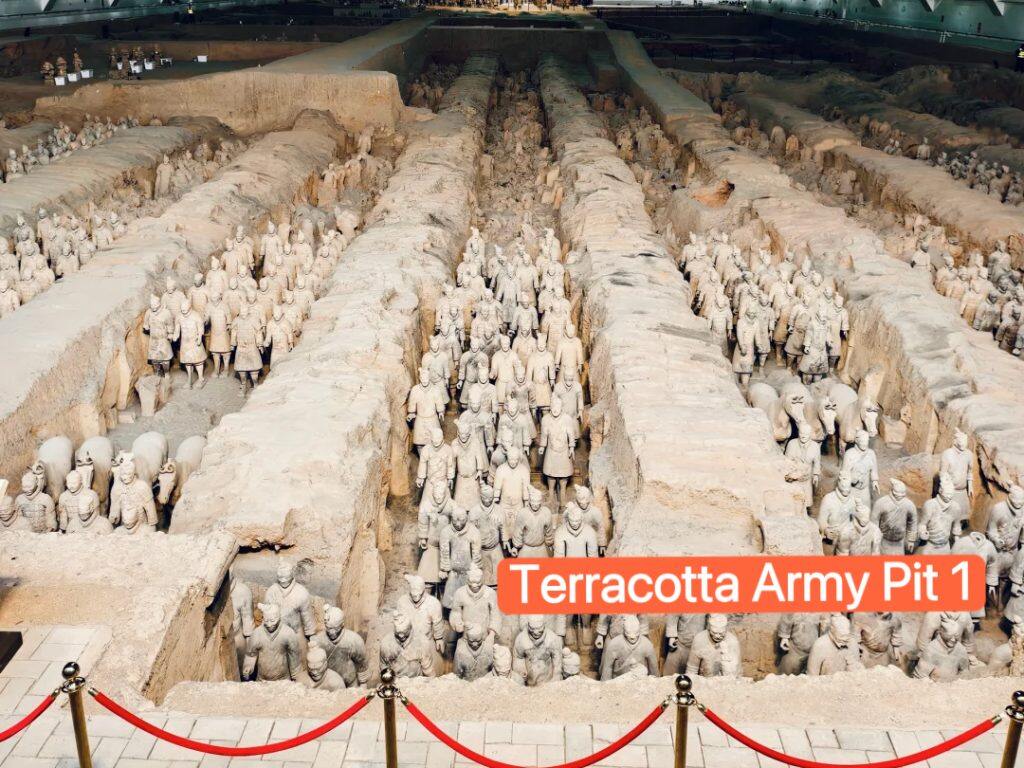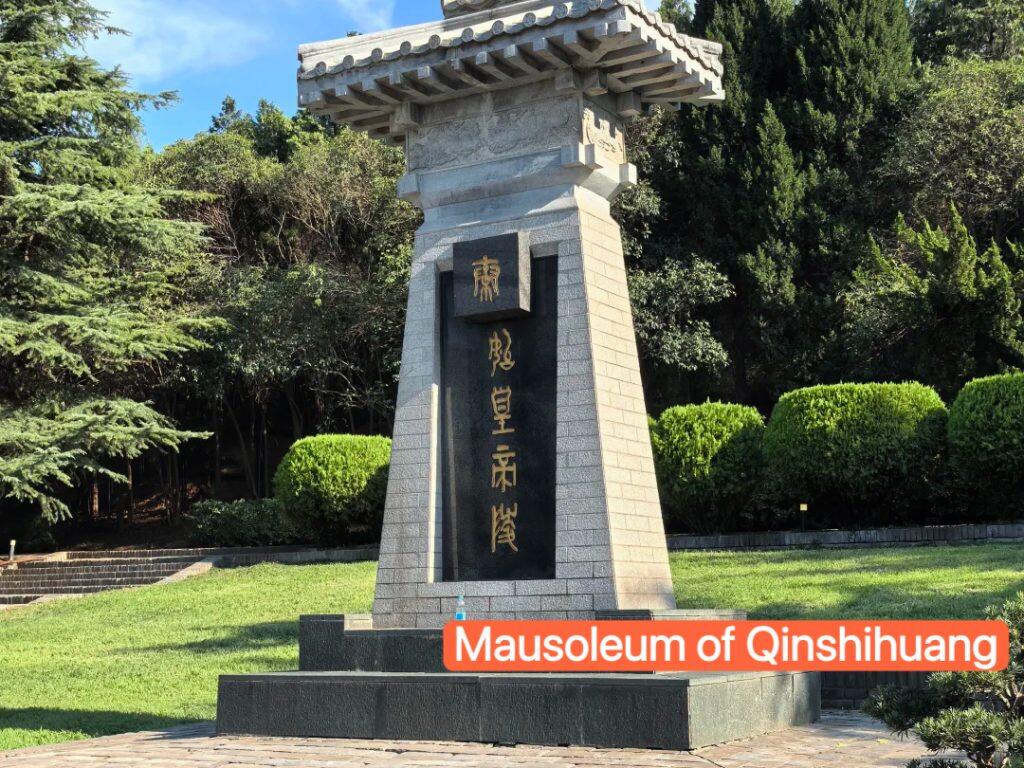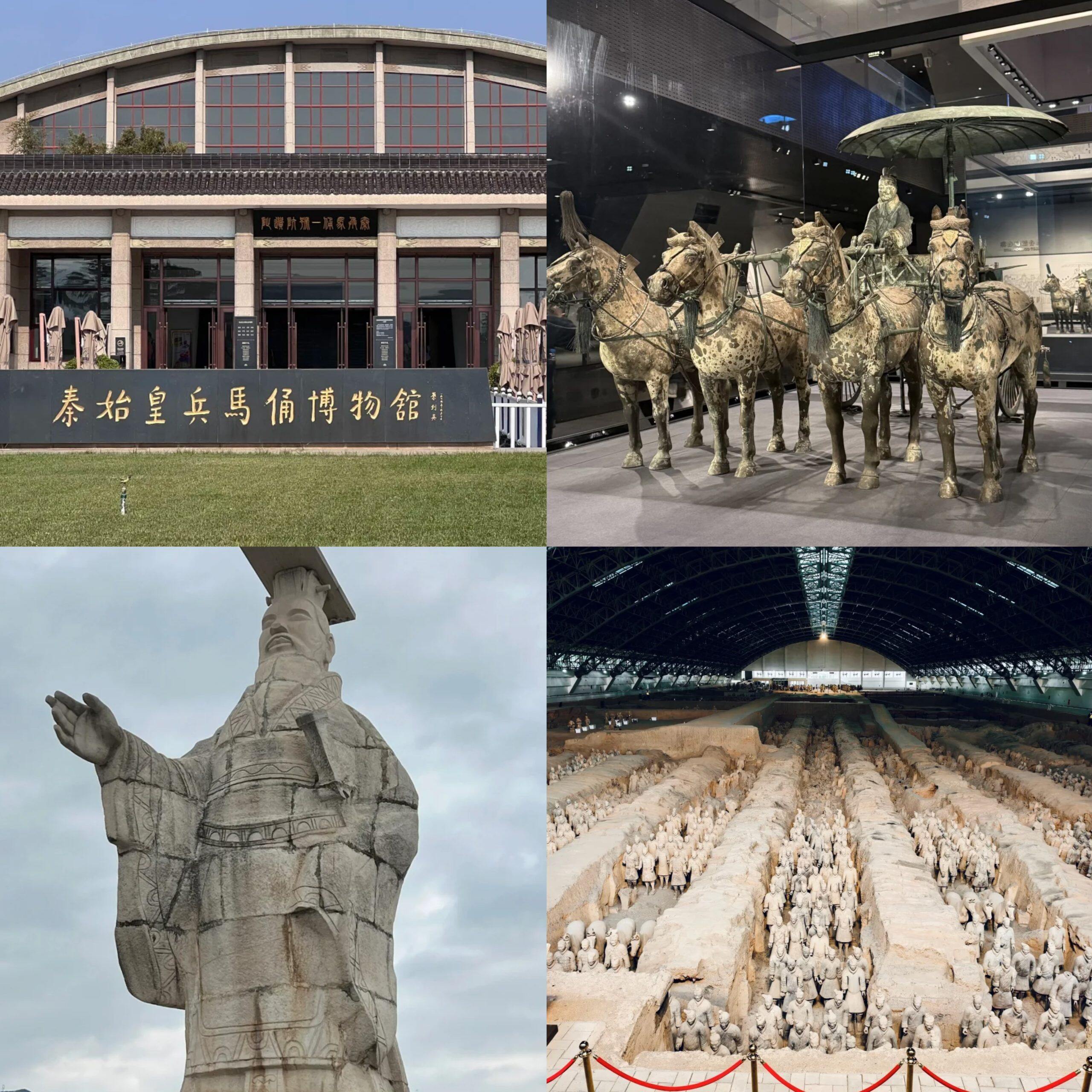Hello, I’m Mike Wang, a China travel expert with over 20 years of experience. During these two decades, I’ve traveled extensively around the world. This guide takes you through the Emperor Qinshihuang’s Mausoleum Site Museum, a world-famous heritage site in China with the Terracotta Army. I’ll share its long history, quiet surroundings, and travel tips to help you plan a great visit.
Introduction
Emperor Qinshihuang’s Mausoleum Site Museum, a world-famous cultural heritage site in China, is located in Lintong District, Xi’an, Shaanxi Province—about 35 kilometers east of downtown Xi’an. It’s closely tied to Qinshihuang, the first emperor of a unified China (221-210 BC).
Covering around 56.25 square kilometers, the museum includes two key parts: the Terracotta Army Pits and the Mausoleum of Qinshihuang. The Terracotta Army, discovered in 1974, is its most famous attraction—thousands of life-sized clay soldiers, horses, and chariots, built to guard the emperor in the afterlife. With a history over 2,200 years, the site shows the grand military and architectural skills of the Qin Dynasty.
Tickets & Opening Hours
Opening Hours:
8:30 – 18:00 (March 16 – November 15);
8:30 – 17:30 (November 16 – March 15).
Last entry is 1 hour before closing.
Ticket Prices:
120 RMB (about $16.5 USD) (March 16 – November 15); 100 RMB (about $13.7 USD) (November 16 – March 15). Free for kids under 1.4 meters.
Purchase & Payment:
Buy tickets at the museum’s ticket offices (cash, Alipay, WeChat Pay, Visa, Mastercard accepted). You can also book online via the official WeChat mini-program “秦始皇帝陵博物院” or Ctrip (English version available). For peak seasons (May 1, October 1 holidays), book 3 – 5 days in advance to avoid long lines.
Main Scenic Areas & Attractions
Terracotta Army Pit 1:
The largest pit, discovered in 1974 by local farmers digging wells. It has over 6,000 life-sized terracotta soldiers, horses, and chariots. Built in the Qin Dynasty (221 – 207 BC), these figures were made to guard Emperor Qinshihuang in the afterlife. Each soldier has a unique face—craftsmen carved them based on real soldiers at that time.

Terracotta Army Pit 2:
Smaller than Pit 1, it has cavalry, infantry, and chariot units. It shows the Qin Dynasty’s advanced military formation. History says this pit was damaged by fire shortly after completion, so some terracotta figures are broken and being repaired.
Terracotta Army Pit 3:
Thought to be the command center of the terracotta army. It has fewer figures but more high-rank officer statues. Archaeologists believe it was the core of the entire terracotta military array.
Mausoleum of Qinshihuang:
The tomb of China’s first unified emperor, Qinshihuang. Built over 39 years with hundreds of thousands of workers, it’s still unexcavated. Historical records say the tomb has a replica of the Qin Dynasty’s landscape, with mercury as rivers. It’s a key part of the museum, showing the emperor’s grand burial system.

Transportation
Note: Emperor Qinshihuang’s Mausoleum Site Museum is in Xi’an, Shaanxi Province, not Chengdu. Here’s how to get there from Xi’an:
- 🚇Subway + Bus: Take Xi’an Subway Line 9 to Huaqing Pool Station, then transfer to Bus 602 or 613 to the museum (total about 1 hour, subway ticket 5 RMB / $0.7 USD, bus ticket 2 RMB / $0.3 USD). Buy subway tickets at station vending machines (English instructions available).
- 🚍Tourist Bus: Take Tourist Bus Line 5 from Xi’an Railway Station to the museum (1 hour, 10 RMB / $1.4 USD). Buy tickets on the bus (cash or mobile payment).
- 🚕Taxi/Ride – hailing: A taxi from downtown Xi’an to the museum costs about 80 – 120 RMB ($11 – $16.5 USD, 40 – 50 minutes). Use Didi (English version) to book easily.
Experience & Activities
Terracotta Making Workshop:
Held daily at the museum’s Cultural Experience Center (10:00 – 11:30, 14:00 – 15:30). Visitors can make small terracotta figures with guidance. Cost: 50 RMB ($6.9 USD) per person. Book on – site at the center or via the official WeChat mini-program 1 day in advance.
Guided Tour (English):
Professional English – speaking guides are available at the entrance (200 RMB / $27.5 USD for a group of up to 5 people, 2 hours). Book by asking the staff at the visitor service desk—no advance booking needed, but peak times may require waiting.
Night Show “The Song of the Terracotta Army”:
Performed at the museum’s outdoor theater every Friday and Saturday night (20:00 – 21:15). Ticket price: 180 RMB ($24.7 USD). Book online via Ctrip 3 days in advance.
Practical Tips & Etiquette
- Supplies: Bring sunscreen, a hat, and water (especially in summer, as the museum is mostly outdoor). Wear comfortable walking shoes—you’ll walk about 2 – 3 kilometers.
- Etiquette: Don’t touch the terracotta figures or artifacts (barriers are set up). No photography in some areas (follow “No Photo” signs). Speak quietly in the exhibition halls to respect other visitors.
- Other Tips: The museum is large—plan 3 – 4 hours for a visit. There are rest areas and toilets throughout the site. Avoid visiting during lunchtime (12:00 – 13:00) if you don’t want to wait in long lines for food.
Food
There are these delicious foods within 3 kilometers of the museum.
- Xi’an Noodle Soup (Yangrou Paomo): A local specialty. It’s wheat bread broken into small pieces, boiled in lamb soup, and served with pickles. Cost: 30 – 40 RMB ($4.1 – $5.5 USD) per bowl. Try it at “Old Xi’an Restaurant” near the museum.
- Terracotta – Shaped Cookies: A fun snack shaped like terracotta soldiers. They’re sweet and crispy, good for gifts. Cost: 15 RMB ($2.1 USD) per box. Sold at small shops near the museum entrance.
- Lamb Skewers: Grilled lamb skewers with spices. Juicy and flavorful. Cost: 3 RMB ($0.4 USD) per skewer. Available at street food stalls near the museum.
- Cold Noodles (Liangpi): Thin wheat noodles with cucumber, bean sprouts, and spicy sauce. Refreshing in summer. Cost: 10 – 15 RMB ($1.4 – $2.1 USD) per plate. Served at most local restaurants nearby.

Mike Wang
Mike Wang is a 40-something Chinese travel expert, has explored the world,
hosting numerous foreign visitors. He’s deeply interested in and knowledgeable
about ancient cultural architectures, enriching journeys with his insights.

